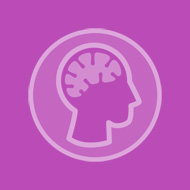Published: 24 February 2023
Key practice points:
- Tinnitus is the perception of a sound without a corresponding external source; it is often described as a
high-pitched ringing or buzzing, but in some cases music or voices may be perceived. It can be viewed as a hallucination or phantom perception.
- In most people with tinnitus some degree of hearing loss is present, but it can also be related to high levels of stress or to physical or emotional trauma
- Patients with tinnitus and suspected hearing loss should ideally be referred to an audiologist for a hearing assessment.
The Weber and Rinne tests can be used in a general practice setting to differentiate conductive and sensorineural hearing loss.
- Sudden sensorineural hearing loss that has started in the last 30 days is an otologic emergency; the patient should be urgently
referred to or discussed with an otolaryngologist
- Secondary causes of tinnitus are rare but need to be considered as they may be treatable and sometimes require urgent attention.
- Conductive hearing loss can be a cause of secondary tinnitus, e.g. due to cerumen impaction; other causes include Ménière’s
disease and vestibular schwannoma (also known as acoustic neuroma).
- Patients with pulse-synchronous tinnitus should be investigated for underlying vascular abnormalities which may be reversible
- Consider how tinnitus is impacting on the patient’s quality of life; for some people it causes significant distress and
disability. Assess for symptoms of depression and anxiety, which are more common in people with tinnitus.
- Providing education about tinnitus is an important first step for all patients following diagnosis. Reassure them that
tinnitus does not mean they will go deaf and that there are effective strategies to improve their symptoms and make
life with tinnitus more manageable.
- There is a lack of evidence of benefit for any pharmacological treatments for tinnitus, however, patients
may find that their symptoms improve with the use of medicines prescribed for concomitant conditions, e.g. depression
- Management strategies should be tailored to the patient and may include:
- Sound therapy – use of specific noises to make tinnitus less noticeable and promote habituation
- Lifestyle changes such as stress reduction and sleep hygiene
- Cognitive behavioural therapy (CBT) – while CBT specifically focused on tinnitus is not widely available in
New Zealand, audiologists specialising in tinnitus may be able to offer treatment based on similar principles.
Online CBT may be useful for some patients.
- Patients with tinnitus that is severely impacting their quality of life should be referred to an audiologist, ideally one who
specialises in tinnitus management. In those with hearing impairment, use of hearing aids may also alleviate their tinnitus.
This is a revision of a previously published article. What’s new for this update:
- General article revision
- Addition of sections on:
- Descriptions of tinnitus associated with specific causes
- Tinnitus-related distress
- Ménière’s disease
- Preventing noise-induced hearing loss
- Resources for patients with tinnitus
Tinnitus is the conscious awareness of sound without an identifiable corresponding external source.1 Tinnitus sounds vary, but are most commonly reported as a ringing, humming, hissing or roaring or a sound like static or cicadas. Some people experience complex auditory hallucinations, such as music or voices.2 Tinnitus can result from any disturbance to the ear or auditory pathway, although a cause is not always found.3
Primary tinnitus (sometimes called idiopathic tinnitus) describes tinnitus caused by symmetric sensorineural hearing loss.3 This includes age-related hearing loss (presbycusis) and noise-induced hearing loss. Primary tinnitus is the most common diagnosis in patients presenting with tinnitus.3
Secondary tinnitus describes tinnitus with an identifiable cause other than symmetric sensorineural hearing loss.3 Causes include cerumen impaction, infections, medicines and tumours (Figure 1). Although secondary tinnitus is less common than primary tinnitus it is important to identify as many of its causes are treatable.3
Objective tinnitus is a subset of secondary tinnitus where sounds made by internal vascular or muscular structures in the head or neck can be heard with a stethoscope.1
Subjective tinnitus is a broad term used to describe all non-objective forms of tinnitus.1
Tinnitus-related distress, sometimes referred to as bothersome tinnitus, occurs when the emotional response to tinnitus causes cognitive dysfunction and autonomic arousal, leading to behavioural changes and functional disability.4 For further information, see: “Tinnitus-related distress”.
Temporary tinnitus. Exposure to loud sounds can cause temporary tinnitus symptoms. Repeated exposure to sound that is loud enough to induce tinnitus can lead to permanent hearing damage (see: “Preventing noise-induced hearing loss”).5
The epidemiology of tinnitus
The prevalence of tinnitus among adults in New Zealand is unclear and global estimates vary considerably. This is likely related to the difficulties defining and measuring tinnitus. A 2022 systematic review of articles published between 1972 and 2021 calculated a pooled prevalence of adults with any form of tinnitus to be 14%.6
There is inconsistent evidence regarding sex differences in tinnitus.6 While some international studies have reported that males are at higher risk of tinnitus,7, 8 others report a higher prevalence in females or no difference between the sexes.6, 9 Occupation may be a confounding factor; exposure to loud noises and hearing loss are associated with tinnitus (see below),7 and males are often over-represented in industries where this is a factor, e.g. automotive and construction workers.10, 11
Tinnitus has been reported more commonly in people of European ethnicity compared to other ethnicities.12, 13 The reason for this is unclear but is likely to be underpinned by ethnicity-associated differences in socioeconomic factors and access to health services.
Risk factors for tinnitus
- Hearing loss. It is estimated that 50 – 90% of people with tinnitus have some degree of hearing loss.5, 14
- Older age. Tinnitus prevalence increases with age.1 This relationship is likely associated with progressive age-related hearing loss.5
- Noise exposure. Occupational or recreational noise exposure is associated with the development of tinnitus and is often accompanied by noise-induced hearing loss.1
- Smoking. Current smokers are 21% more likely to experience tinnitus than people who have never smoked.15
Tinnitus is a heterogeneous condition and for most patients, the aetiology of their tinnitus will be unclear.5 If symptoms of tinnitus are reported, a focused history and physical examination can identify any red flags that would indicate urgent referral is required or potential secondary causes that can be addressed (Figure 1).3, 16

* In patients with asymmetric hearing loss consider both bilateral and unilateral causes
† Patients with vestibular schwannoma do not always have vertigo and focal neurological features
Figure 1. Diagnostic algorithm for patients presenting with tinnitus.3, 5, 16
Ask the patient to describe the tinnitus. What does it sound like? Is it heard in one ear, both ears or elsewhere inside the head? Is it pulsatile? Is it intermittent or continuous? Does anything make it better or worse?3 For descriptions associated with particular causes of tinnitus, see Table 1.
The presence of associated symptoms may increase suspicion of an underlying cause. Consider middle ear pathology if the patient reports otalgia, otorrhoea or aural fullness.16 Vertigo may indicate an inner ear disorder or a central cause, e.g. vestibular schwannoma (acoustic neuroma), vestibular migraine or stroke.16 Patients with Ménière’s disease usually present with the distinctive combination of episodic vertigo and fluctuating unilateral aural symptoms, including tinnitus, low- and medium-pitch hearing loss and aural fullness (see: “Ménière’s disease”).19
A review of the patient’s medicines may also reveal potential causes of tinnitus (Table 2). Ask about use of over-the-counter medicines, e.g. NSAIDs, aspirin.16
Otoscopic examination may reveal cerumen impaction, otitis externa, otitis media, tympanic membrane perforation or a foreign body in the external auditory canal.16
Tympanometry may be helpful if middle ear pathology is suspected, e.g. in unexplained conductive hearing loss.22 In patients with pulsatile tinnitus, auscultate the carotid arteries at the base of the neck, the carotid bifurcation and the angle of the jaw. Also listen in the periauricular area and with the stethoscope placed over the ear.16
Focused neurological examination including cranial nerves and cerebellar function may reveal a neurological deficit suggestive of vestibular schwannoma or stroke.16 Examine the temporomandibular joint (TMJ) for tenderness and crepitus. TMJ syndrome or tinnitus that changes with orofacial movement may indicate a somatosensory mechanism.5
Table 1. Descriptions of tinnitus associated with specific causes.16–18
| Description |
Potential cause |
| Bilateral ringing/buzzing/hissing |
Symmetrical sensorineural hearing loss (primary tinnitus) |
| Pulsatile (particularly if tinnitus is pulse-synchronous) |
Vascular tinnitus |
| Rhythmic clicking |
Palatal myoclonus |
| Unilateral |
Conductive hearing loss, Ménière’s disease, vestibular schwannoma (acoustic neuroma), vestibular migraine, stroke |
| Breath autophony, voice autophony and aural fullness |
Patulous Eustachian tube, dehiscent semicircular canal |
| Intermittent roaring sound (with low- and medium-pitch hearing loss, aural fullness and vertigo) |
Ménière’s disease |
| Sounds that vary with head and neck movement |
Somatosensory tinnitus |
Table 2. Examples of ototoxic medicines.20, 21
| Medicine |
Time to recovery after discontinuation |
| Loop diuretics*†, e.g. furosemide |
Unknown; possibly up to 24 hours** |
| Aspirin and other NSAIDs* |
Up to three days |
| Macrolide antibiotics*, e.g. erythromycin, clarithromycin and azithromycin |
Up to three weeks |
| Aminoglycosides, including ear drops* (e.g. neomycin and framycetin) and intravenous gentamicin |
Irreversible |
| Antineoplastic platinum derivatives, especially cisplatin |
Irreversible |
*Usually only ototoxic at high doses or in overdose
†Loop diuretics may compound irreversible ototoxicity in patients taking cisplatin or aminoglycosides
**Based on in vitro data
Tinnitus often occurs alongside hearing loss, however, the degree of hearing loss does not always match the severity of the tinnitus.5 Identifying the type of hearing loss can help to establish an underlying cause.
By definition, people with primary tinnitus have symmetric sensorineural hearing loss.3 Conductive hearing loss or unilateral sensorineural hearing loss indicates secondary tinnitus (Figure 1).3
Enquire about hearing difficulties and occupational and recreational noise exposure.22 A brief hearing check can be performed by the clinician rubbing their fingers together behind the patient’s ear or using a soft whisper and assessing whether they can hear the noise.23 If hearing loss is suspected, referral to an audiologist for a full diagnostic hearing assessment is recommended.22
Read more about conductive and sensorineural hearing loss:
When a sound is heard, vibrations are transmitted to the cochlea through the ear canal, tympanic membrane and ossicular chain (air conduction).24 If the sound source is touching a bony part of the head, vibrations are also transmitted directly to the cochlea through the skull (bone conduction).24
Conductive hearing loss affects the process of sound transmission to the cochlea. Causes include occlusion of the ear canal, tympanic membrane rupture or fluid in the middle ear.25 Most causes affect each ear independently, so conductive hearing loss is often unilateral or asymmetric. In people with conductive hearing loss air conduction is impaired while bone conduction is preserved.25
Sensorineural hearing loss involves the inner ear or cochlear nerve.25 Age-related hearing loss and noise-induced hearing loss typically follow a symmetric sensorineural pattern.25 Causes of unilateral sensorineural hearing loss include Ménière’s disease, vestibular schwannoma or stroke (Figure 1).16, 25 The deficit affects the conversion of mechanical vibrations to electrical signals, therefore hearing is impaired for both air and bone conduction.25, 26
Asymmetric hearing loss describes bilateral hearing loss with more severe impairment in one ear. This may be the result of a single cause affecting the ears unevenly, e.g. Ménière’s disease,19 or noise-induced hearing loss, e.g. from recurrent firearms use.25 It may also represent unilateral hearing loss superimposed on symmetric hearing loss, each with its own cause.27 When assessing patients with asymmetric hearing loss consider causes associated with unilateral hearing loss, even though there is hearing impairment in both ears (Figure 1).25
Tuning fork tests
When hearing loss is suspected from the history or a brief hearing check, the Weber and Rinne tuning fork tests can be used to check for the presence of, and differentiate between, conductive hearing loss and sensorineural hearing loss (Table 3).25 Both tests operate on the principle of comparing air conduction to bone conduction and should be used together.25
Best practice tip: Tuning fork tests are not diagnostic and should be used to help direct further assessment. They may not produce accurate results in patients with severe sensorineural hearing loss (see below),28 and do not replace referral to an audiologist for a full diagnostic hearing assessment.
How to perform a Weber test:
The Weber test detects patients with unilateral or asymmetric hearing loss. It is more sensitive at picking up asymmetric conductive hearing loss than asymmetric sensorineural hearing loss.29
Instructions:25
- Hit a 512 Hz tuning fork lightly on a firm surface such as your knee
- Support the back of the patient’s head with one hand
- Use the other hand to hold the base of the tuning fork to the middle of the patient’s forehead
- Ask the patient whether the sound is louder in one ear
If the sound is heard equally in both ears this indicates normal hearing or symmetric hearing loss, e.g. age-related hearing loss.25 History and basic hearing assessment may help to differentiate patients with normal hearing from those with hearing loss.
If the sound lateralises to one ear, i.e. is heard better in that ear, this indicates unilateral or asymmetric hearing loss.25 Lateralisation may indicate conductive hearing loss in that ear.25 An easy way to remember this is to give yourself temporary conductive hearing loss by blocking one ear with your finger; when you speak or hum, the sound will lateralise to the blocked ear. Lateralisation may also indicate sensorineural hearing loss in the opposite ear.25
An abnormal Weber test, i.e. one where the sound lateralises to one ear, should be followed by the Rinne test to determine whether there is conductive hearing loss in that ear (ipsilateral) or sensorineural hearing loss in the opposite ear (contralateral) (Table 3).25
How to perform a Rinne test:
The Rinne test identifies patients with significant conductive hearing loss. Each ear is tested separately.25
Instructions:25
- Hit a 512 Hz tuning fork lightly on a firm surface such as your knee
- Hold the base of the tuning fork to the patient’s mastoid process for a few seconds
- While the tuning fork is still vibrating, hold it near the ear canal
- Ask the patient which position lets them hear the sound best
- Repeat on the other ear
Patients with normal hearing or sensorineural hearing loss will hear the tuning fork best when it is held near the ear canal (positive Rinne test; normal result).22, 25 Patients with significant conductive hearing loss will hear the tuning fork best when it is held to the mastoid process (negative Rinne test; abnormal result) (Table 3).22, 25
Beware of a “false negative” Rinne test in patients with severe unilateral sensorineural hearing loss.28, 30 If a tuning fork is held against the mastoid process on the side that has severe sensorineural hearing loss, although no sound is registered in the ear being tested, the vibrations travel through the skull and register in the opposite ear (the patient is unable to distinguish which side the sound is coming from in their head).28 When the tuning fork is moved to the external auditory canal (again, on the side with severe sensorineural hearing loss), the patient does not register any sound. Taken at face value, these results would suggest conductive hearing loss and could influence further investigations and management.30
Table 3. Interpretation of Weber and Rinne test results.22, 25
| Hearing |
Weber* |
Rinne† |
| Normal |
Midline |
Positive |
| Sensorineural hearing loss |
Unaffected ear |
Positive |
| Conductive hearing loss |
Affected ear |
Negative |
*Side the tuning fork is heard best
†Positive Rinne test – air conduction better than bone conduction; negative Rinne test – bone conduction better than air conduction
Ménière’s disease
Ménière’s disease is a disorder of the inner ear characterised by tinnitus, hearing loss, aural fullness and episodic vertigo.19 It can occur at any age but is rare in older people and young children; peak incidence is among people aged in their 40s.19 Symptoms are typically unilateral at disease onset but may become bilateral over time.19
Episodic vertigo is a defining symptom of Ménière’s disease with episodes ranging in duration from 20 minutes to 24 hours and often associated with nausea and vomiting.19 Attacks typically occur 6 – 11 times per year, but there may be remissions lasting months or years.19
Fluctuating sensorineural hearing loss occurs in Ménière’s disease, usually affecting low- and medium-frequency hearing.19 As the disease progresses, hearing loss may become constant and affect the entire audible spectrum.31 The tinnitus is characteristically a roaring sound during attacks, although a ringing sound may be present at other times.16 Feelings of aural fullness in the affected ear are also common.19
Early in the disease course, tinnitus and hearing loss often occur in close association with episodes of vertigo.19 In the long term, hearing loss is progressive but the episodic vertigo usually improves and may eventually cease.19
Symptoms of episodic vertigo are often treated pharmacologically with antiemetics.32 Vestibular rehabilitation with a physiotherapist may help with vestibular dysfunction, e.g. imbalance, that persists between attacks.33 Some patients are able to reduce the frequency of their attacks by identifying triggers and making lifestyle changes, e.g. minimising stress, reducing intake of caffeine, alcohol or salt.19
Long-term pharmacological treatments used in Ménière’s disease include betahistine or diuretics, although there is limited evidence supporting their use.19 Intratympanic corticosteroid or gentamicin injections, performed in a secondary care setting, are usually effective at improving symptoms.19 In patients with intractable unilateral Ménière’s disease, surgical labyrinthectomy may resolve symptoms but also causes loss of any residual hearing.34
For further information on the differential diagnosis and treatment of episodic vertigo, see: bpac.org.nz/bpj/2012/september/vertigo.aspx
The impact of tinnitus on day-to-day life varies widely, from minimal disruption to significant distress and disability requiring more intensive management (see: “Tinnitus-related distress”).4, 35 Tinnitus is reported as being bothersome in up to 20% of affected people.5
When taking a medical history in patients with tinnitus:
- Ask about the effect it has on sleep, employment, study, leisure activities and relationships with family and friends36
- Ask about hyperacusis, where ordinary sounds are perceived as unbearable and painfully loud; this is common in people with tinnitus and can significantly affect quality of life37
- Screen for symptoms of depression and anxiety, which occur more frequently in people with tinnitus (see below)36
Tinnitus-related distress
Most people report that tinnitus becomes less noticeable over time, similar to becoming accustomed to background sounds in the daily environment, e.g. air conditioning or a clock ticking. This process is known as habituation.3
For some people tinnitus can become extremely loud and bothersome, significantly affecting their quality of life.3 Negative interpretations of the sounds they perceive cause them to pay increased attention to their tinnitus.4 Heightened awareness of tinnitus is a barrier to habituation and causes autonomic arousal and emotional distress; the experience of distress reinforces the person’s negative interpretations.4 This cycle can lead to avoidance behaviours, hypervigilance and tinnitus catastrophising.4
When severe, tinnitus-related distress results in functional disability and reduced quality of life. People report difficulty concentrating, communicating, and sleeping.3 These difficulties impact employment, social relationships and leisure activities.3
Reasons for tinnitus-related distress are multifactorial and may include health anxiety, past experience and current life situation.4 Personality factors have a significant influence, e.g. tendencies to hold negative beliefs about self and the world.4 Depression and anxiety are often co-morbid with tinnitus.4 This relationship is complex, as tinnitus can contribute to depression and anxiety, but these conditions also modify interpretations of tinnitus.4 People with tinnitus-related distress are at increased risk of suicidal ideation.16 For further information, see: “Management of tinnitus-related distress”.
Some causes of secondary tinnitus can be managed in primary care, e.g. otitis media, otitis externa, accessible foreign object in the external auditory canal, reversible medicine-induced ototoxicity.3 Patients with cerumen impaction should be referred for aural microsuction, although cost may be a barrier for some. For many patients, symptoms will resolve with treatment; reassess those whose tinnitus or hearing loss persists.3
Refer patients with red flags to secondary care
Patients with any of the following features should be discussed with or referred to an otolaryngologist (referral to an audiologist or other specialist may also be appropriate depending on the suspected underlying cause):36, 38
- Tinnitus with a focal neurological deficit: urgent referral
- Tinnitus with vestibular symptoms, e.g. vertigo, loss of balance: urgent referral if symptoms severe
- Tinnitus with sudden hearing loss (onset over three days or less): urgent referral if within 30 days
- Pulsatile tinnitus
- Tinnitus with unilateral or asymmetric hearing loss
Primary tinnitus is managed by identifying and treating hearing loss, providing appropriate education and addressing contributing lifestyle factors, e.g. stress.1, 3 Cognitive behavioural therapy (moderate to high quality evidence) and sound enrichment (low quality evidence) could also be considered to reduce the negative impact that tinnitus-related distress has on a patient’s quality of life.3
Evaluate hearing loss if present – patients with primary tinnitus or secondary tinnitus that has not resolved after routine treatment, e.g. microsuction, should be referred to an audiologist for pure-tone audiometry to further assess their degree of hearing loss.3 Hearing aids may be appropriate for some patients with hearing loss, and may also improve their tinnitus symptoms (if there are no other triggers).5 The use of hearing aids to relieve tinnitus in people who do not have hearing loss is not recommended.5
Provide education and reassurance – education and reassurance are an important part of the management of a patient with tinnitus because their understanding of tinnitus can affect the degree of disability it causes.36 At their first appointment, patients should receive tinnitus education relevant to their health literacy level.36 In some situations, it may be beneficial to provide tinnitus education to family/whānau as well.5
Explain that tinnitus is often associated with or caused by hearing loss.5 Reduced hearing means the brain does not receive the same sound signals it used to, so the brain “turns up the volume” to try to detect the missing sounds—this can result in tinnitus.39 Patients should be reassured that tinnitus does not make hearing loss worse, and it is only rarely associated with more serious medical conditions.5
Address lifestyle factors – stress is an important underlying factor in tinnitus; approximately 65% of people with chronic tinnitus also have stress symptoms.40 An increase in stress may exacerbate tinnitus or make the experience more distressing.5 Other lifestyle factors such as sleep, diet and exercise can also affect tinnitus.5 Patients may be able to identify and manage certain triggers for their symptoms, allowing for more control over their tinnitus.
For most people with tinnitus, their symptoms become less noticeable and less annoying over time, although they may not completely go away.5 In some cases tinnitus can be completely eliminated, particularly when the cause of hearing loss is treatable.1
Hearing a ringing or buzzing noise in the complete absence of sound is a normal phenomenon.39 Therefore it is understandable that people with tinnitus usually find it most noticeable in quiet settings, such as lying in bed. Patients may be able to improve tinnitus symptoms in these situations by adding a background sound source.41 Suggest trying a sound that has a similar pitch and character as their tinnitus. Neutral noises like a fan or nature sounds are more effective than active sound from music, television or radio. The best volume for background noise is just quieter than the perceived tinnitus sounds; this aids habituation as the tinnitus and background noise mix together, helping the brain realise the tinnitus is not a “threat”.42 Sound enrichment is an ongoing area of research and while there is a lack of evidence to recommend one specific method over another, there is currently no evidence of harm; a trial and error approach may be required to identify which conditions work best for a particular patient.
- Smartphone apps are available that play white noise or nature sounds. There are also options on platforms such as Spotify, Apple Music, YouTube and SoundCloud. Specialised bedside sound enrichment devices can be purchased online.
- An audiologist who specialises in tinnitus management can advise on other sound enrichment devices including wearable noise generators which are fitted to the ears and hearing aids with sound enrichment features.
Many medicines have been trialled in patients with tinnitus, but none have sufficient evidence to recommend them for routine use. Guidelines recommend against use of betahistine, benzodiazepines, antidepressants and anticonvulsants for most people with tinnitus, although betahistine may be used to treat patients with Ménière’s disease (see: “Ménière’s disease”).3, 36
Patients with depression and tinnitus are still likely to benefit from antidepressants; effective treatment of depression may also alleviate their tinnitus.16
- Stress reduction. Techniques include breathing exercises, guided relaxation and mindfulness (see: “Resources for patients with tinnitus”). Lifestyle changes to reduce stress may also be beneficial.5
- Sleep hygiene. Tinnitus often disturbs sleep, and the resulting tiredness may exacerbate tinnitus. Encourage good sleep hygiene. Sound enrichment at night may be helpful.5
For further information on sleep hygiene and the treatment of insomnia, see: bpac.org.nz/2017/insomnia-1.aspx
- Cognitive behavioural therapy (CBT). This is the most researched psychological intervention for tinnitus, and it may incorporate relaxation techniques, behavioural sleep management and sound enrichment. CBT is effective at alleviating distress in patients with tinnitus, but does not usually reduce the presence or perceived loudness of tinnitus.37 Tinnitus-focused CBT is not widely available in New Zealand, but audiologists specialising in tinnitus may be able to offer treatment based on similar principles.
- Referral. Patients with primary tinnitus that still causes significant distress after management in primary care should be referred to an audiologist (who specialises in tinnitus), or an otolaryngologist.
Preventing noise-induced hearing loss

Patients with tinnitus should be advised about prevention of noise-induced hearing loss. Many of these patients already have impaired hearing; it is important they protect themselves against further hearing loss, which may also worsen their tinnitus.5
Situations that risk damaging hearing
The first step in preventing noise-induced hearing loss is to identify situations where noise is loud enough to damage hearing.
People are at risk of hearing loss if the environment is so loud that they:43
- Cannot hear what others are saying
- Need to raise their voice to be heard
- Find that their ears hurt
- Experience temporary (or temporarily worse) hearing loss or tinnitus
These criteria can apply to people in a variety of contexts, including workplaces and music venues. Strategies for hearing protection should be tailored to the setting, and may include:43
- Limiting frequency of exposure
- Staying away from noise sources, e.g. loudspeakers at a concert
- Wearing hearing protection that fits well (reusable earplugs that do not affect sound quality can be purchased from music stores and made-to-measure earplugs are available from audiologists)
- Taking breaks somewhere quiet
Headphones and earphones
People who regularly use headphones and earphones are at increased risk of noise-induced hearing loss. They can reduce their risk by:43, 44
- Listening at the lowest volume that lets them hear comfortably
- Using noise-cancelling headphones, which allow comfortable listening at lower volumes
- Taking a break for five minutes after every hour of listening
- Setting a volume limiter on their device
- Apple devices can track total noise exposure from headphone use and provide warning notifications; they also let you specify a maximum volume in decibels
- Some Android devices can limit volume or warn about dangerous noise levels
- If no specialised features are available, avoid setting the volume level above 60% of maximum while using headphones
Tinnitus information
Information on tinnitus from Health Navigator.
Tinnitus tunes
Online resource combining education, sound therapy and relaxation techniques. Payment is required for full access, so this may not be an option for some patients.
Tinnitus resources
Information and links from Tinnitus Australia.
Audio relaxation exercises
Exercises including breathing, muscle relaxation and guided visualisation developed by Australian mental health organisation Beyond Blue.
Just a thought
Online cognitive behavioural therapy resource for people with mild-to-moderate anxiety and depression. Produced in New Zealand. Currently no tinnitus-specific resources.





